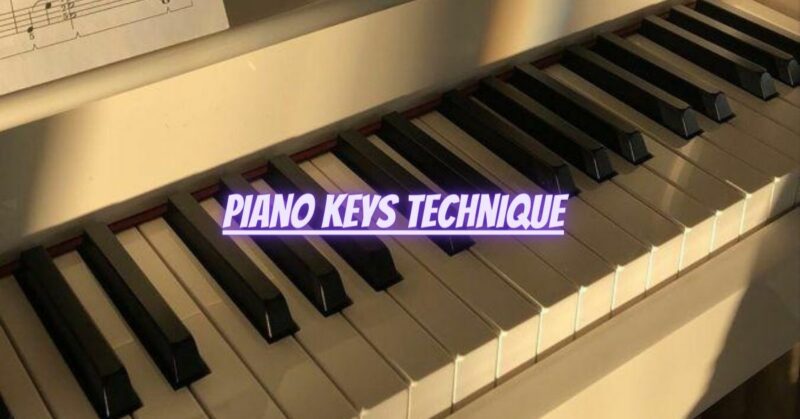The piano keys technique is the foundation upon which a pianist’s artistry and mastery are built. It encompasses a wide range of skills and approaches that enable pianists to produce beautiful, expressive, and captivating music. A solid piano keys technique is essential for developing precision, control, and versatility in playing various musical styles. In this article, we will explore the significance of piano keys technique, understanding its key components, and how it shapes a pianist’s musical journey.
1. The Significance of Technique:
Piano keys technique is the physical means through which a pianist interacts with the instrument. It allows the translation of musical ideas into sound, creating a deep connection between the artist and the piano.
2. Hand Position and Posture:
Proper hand position and posture are the cornerstones of piano keys technique. A relaxed and natural hand position enables agility and fluidity in playing, reducing the risk of tension and injury.
3. Finger Independence:
Developing finger independence is vital for executing complex passages and chords with precision. Pianists must train their fingers to move independently, allowing for accurate articulation and control over individual notes.
4. Finger Strength and Flexibility:
Building finger strength and flexibility enhances the pianist’s ability to control the keys effectively. Regular finger exercises and technical drills are essential for developing finger dexterity.
5. Control of Dynamics:
A proficient piano keys technique allows for a wide range of dynamics, from delicate pianissimos to powerful fortissimos. Pianists must learn to control their touch and pressure on the keys to achieve the desired dynamics.
6. Legato and Staccato Playing:
Mastering legato touch, where notes are connected smoothly, and staccato touch, where notes are detached, adds expressive possibilities to a pianist’s repertoire. Understanding and applying these techniques appropriately bring depth to musical phrasing.
7. Pedaling Technique:
The proper use of the sustain pedal enhances the resonance and blend of piano sounds. Pianists must learn when and how to pedal effectively to create a seamless and polished performance.
8. Slow Practice and Muscle Memory:
Slow practice is crucial for building muscle memory and precision in piano keys technique. Careful and deliberate practice helps internalize the movements required for challenging passages.
9. Artistic Expression:
A solid piano keys technique serves as the vehicle for artistic expression. With a strong technical foundation, pianists can fully focus on interpreting and conveying emotions through their playing.
10. Lifelong Learning:
Piano keys technique is a lifelong journey of refinement and growth. Even accomplished pianists continuously work on their technique to maintain and expand their skill set.
Conclusion:
Piano keys technique is the key that unlocks a pianist’s full potential. By focusing on hand position, finger independence, and control of dynamics, pianists can develop a foundation that empowers them to express themselves artistically and masterfully. The journey of honing piano keys technique is one of dedication, patience, and passion for music. By continually refining their technique and embracing the joy of learning, pianists can reach new heights of musical excellence. Let piano keys technique be the guiding force that elevates your playing, inspiring both the performer and the audience on a profound and transformative musical journey. Happy playing!


